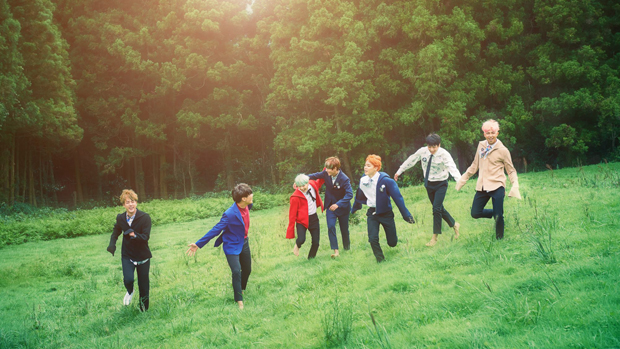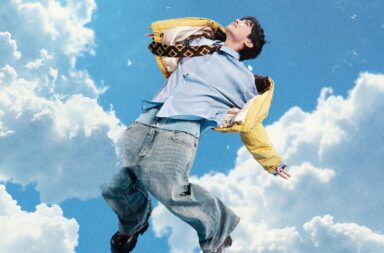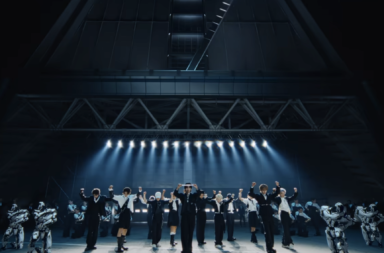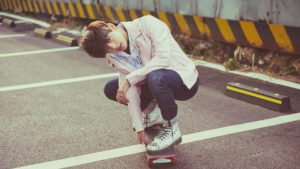 Earlier this month, BTS rounded up their popular and acclaimed “The Most Beautiful Moment in Life” cycle with the release of a special album and three MVs, bagging wins from all three major music shows they performed on despite the short one-week promotion period.
Earlier this month, BTS rounded up their popular and acclaimed “The Most Beautiful Moment in Life” cycle with the release of a special album and three MVs, bagging wins from all three major music shows they performed on despite the short one-week promotion period.
The success of this series stems in part from the way the group has been developed since their debut in 2013. From the outset, BTS has been promoted with thematic and stylistic consistency, with a focus on the hip-hop genre. Due to their status as an idol group, their legitimacy as hip-hop artists has been called into question. However, a closer look at their music reveals an element of socio-cultural relevance and resistance that characterises hip-hop culture and music. Many of their songs focus on social issues and critiques, striving to voice the concerns and thoughts of their generation.
In addition, BTS’s releases to date have been following a growth trajectory, beginning with the school trilogy with the title tracks “No More Dream”, “N.O”, “Boy in Luv”, and “Just One Day”. These shifted to a darker, more angsty image in “Danger” and “War of Hormone”. In “The Most Beautiful Moment in Life” series, the group demonstrates more nuance and emotional maturity, without losing sight of their aim to reach out to their generation.
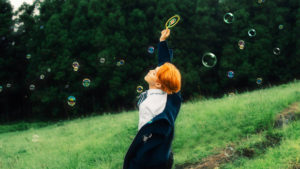 Given this sense of growth and BTS’s goal of voicing the thoughts of adolescents, it’s not surprising that “The Most Beautiful Moment in Life” cycle chose to focus on the theme of youth. This isn’t the first time in recent K-pop history that youth takes centre stage. The theme underpins both of AkMu’s albums, Play and Adolescence Vol.1, and well-received pop culture works like the Answer Me drama series and the films Sunny (2011) and Twenty (2015). The popular reception towards such works suggests that there is something about youth that continues to fascinate us. What makes youth so appealing and intriguing?
Given this sense of growth and BTS’s goal of voicing the thoughts of adolescents, it’s not surprising that “The Most Beautiful Moment in Life” cycle chose to focus on the theme of youth. This isn’t the first time in recent K-pop history that youth takes centre stage. The theme underpins both of AkMu’s albums, Play and Adolescence Vol.1, and well-received pop culture works like the Answer Me drama series and the films Sunny (2011) and Twenty (2015). The popular reception towards such works suggests that there is something about youth that continues to fascinate us. What makes youth so appealing and intriguing?
BTS suggests an answer: youth is the most beautiful moment in life. The cycle explores the experiences of youth—friendships and relationships, dreams and hardships—in a complex way. “The Most Beautiful Moment in Life” series balances beauty and grittiness, maintaining a sense of ambivalence and subjectivity in their portrayal of youth. The result, though at times perplexing, is neither overly dramatic nor too romanticised, but striking and poignant.
Much has been done by the fandom to piece together the narrative of the “I Need U” and “Run” MVs and “화양연화 on stage : prologue”. In contrast, less has been written about the aesthetic and literary value of the series. Through examining some of the videos and concept photos, I will be discussing the motifs and film techniques that the production team have used to develop and comment on the theme of youth.
Many of the motifs and symbols in “The Most Beautiful Moment in Life” cycle have appeared in a similar form in other cultural mediums, and the ideas and messages about youth conveyed here are not new. But it is rare for anyone in K-pop to employ and develop them with such consistency and finesse, to such a profound and poignant effect.
A closer examination of the visual materials reveals how aesthetically coherent the cycle is. The first video in the series, “Comeback Trailer: 花樣年華”, introduces a few key motifs. Cross-cutting is used to intertwine two sequences: a boy playing basketball after school and running past a river and across a bridge, and a flower blooming. A surreal effect is created by the twilight glow and emptiness of the scenes with the boy, and by the unnaturally rapid speed at which the flower blooms.
Finally, the two sequences converge when the boy leaves the realist setting to arrive in the fantasy space, now framed by cherry blossom branches, where the flower is in full bloom. The moment he stops, the flower wilts, and cherry blossom petals rain down from the sky. These sets of motifs—fast movements, water, flowers, and sunsets—recur in later videos and concept photos to form a complex, bittersweet portrayal of youth.
 Youth is presented in a complex manner through images that carry ambivalent meanings. One quality highlighted is energy—the way youths cast aside reservations and rules to pour their heart and soul into what they do, be it having fun with friends or chasing their dreams. The BTS boys run a lot: through tunnels and underpasses, across fields, towards the sea. But their reason for running is often unclear. Are they running towards something, or away from it?
Youth is presented in a complex manner through images that carry ambivalent meanings. One quality highlighted is energy—the way youths cast aside reservations and rules to pour their heart and soul into what they do, be it having fun with friends or chasing their dreams. The BTS boys run a lot: through tunnels and underpasses, across fields, towards the sea. But their reason for running is often unclear. Are they running towards something, or away from it?
The act of running itself holds contrasting ideas. It can represent drive and resilience, as expressed in the chorus of “Run”:
Let’s run run run again! It’s ok to fall down
Let’s run run run again! It’s ok to be injured
But at the same time, running consumes energy and pushes the runner towards exhaustion. It is not a sustainable state that one can constantly remain in, and the line “Let me run more” conveys a sense of desperation to hold on to it.
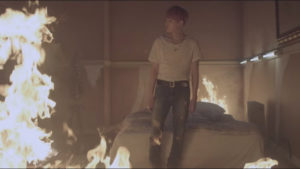 Fire is another motif that brings out a similar paradox. It appears in various forms: the campfire the boys sit around and the sparklers they play with, the discarded cigarette at the petrol station, and the flames in Suga‘s hotel room in “I Need U”; Suga idling flicking a lighter on and off in the prologue video; the piece of paper and the photograph Jimin burns in “I Need U” and “Run”; the man who combusts and the exploding room in “Fire”; and the flames licking up polaroid photos in “Young Forever”. Like running, fire represents energy, but also recklessness and destruction.
Fire is another motif that brings out a similar paradox. It appears in various forms: the campfire the boys sit around and the sparklers they play with, the discarded cigarette at the petrol station, and the flames in Suga‘s hotel room in “I Need U”; Suga idling flicking a lighter on and off in the prologue video; the piece of paper and the photograph Jimin burns in “I Need U” and “Run”; the man who combusts and the exploding room in “Fire”; and the flames licking up polaroid photos in “Young Forever”. Like running, fire represents energy, but also recklessness and destruction.
Running is not the only fast movement that dominates the videos; there are many images of spinning as well. This motif is introduced subtly in “I Need U”: Jungkook is swung in a circle by his attackers; the crane shot of an unconscious J-hope on the bridge rotates slowly as the camera pulls away; and Jin drives a car in circles around Rap Monster and V. It also appears in Rap Monster’s verse in the song:
It goes round & round, why do I keep coming back
I go down & down, at this point, I’m just a fool
The spinning motif is later used more deliberately to create a sense of chaos. This effect is first established in “Comeback Trailer: Never Mind”. The video follows a boy, likely the same one from the first trailer, as he chases after a butterfly. He runs through a tunnel at rapid speed, and the checkered pattern creates the disorienting illusion of the tunnel’s walls spinning in opposite directions.
The images of spinning are further developed in the party scene of “Run”. In this sequence, Jimin rolls his head back, a toy mouse whirls around on a playing record, and J-Hope waves his arm in a circular motion as his friends wheel him on a wheelchair. The circling movements are combined with Dutch tilts, quick cuts, and a cluttered, dim, foggy setting. The outcome is dizzying, almost psychedelic.
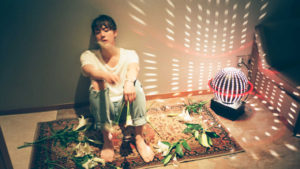 The BTS members act out a range of problems that adolescents experience: family issues, delinquency, physical and mental illness, loss, and loneliness. Their narratives are reinforced by the above-mentioned aesthetic and cinematographic choices—ambivalent images that cannot be pinned down to either a positive or a negative connotation, and rapid movements—to portray the confusion that characterises youth.
The BTS members act out a range of problems that adolescents experience: family issues, delinquency, physical and mental illness, loss, and loneliness. Their narratives are reinforced by the above-mentioned aesthetic and cinematographic choices—ambivalent images that cannot be pinned down to either a positive or a negative connotation, and rapid movements—to portray the confusion that characterises youth.
Youth, the series further suggests, is not just marked by the feeling of confusion; an air of uncertainty clings to it. This uncertain mood is sustained by various choices in cinematography and visual details. The MVs are dominated by gloomy, dark shades like blue, grey, and black, and even scenes with brighter colours are muted. The videos are anachronistic, jumbling up pieces of the narrative and dissolving the borders between reality, memories, dreams, and hallucination.
 Uncertainty is a quality present in the chosen visual details as well. The house of cards, a central image, is precarious and unstable, evoking a sense of insecurity. The motif of water recurs and adds to the unease. In “I Need U” and the prologue video, the BTS boys run towards and look out at the sea.
Uncertainty is a quality present in the chosen visual details as well. The house of cards, a central image, is precarious and unstable, evoking a sense of insecurity. The motif of water recurs and adds to the unease. In “I Need U” and the prologue video, the BTS boys run towards and look out at the sea.
Traditionally, the sea is associated with danger and destruction due to the threat of drowning that it poses to seafarers. In “I Need U”, Jimin breaks down as the bathtub behind him overflows with water and starts to fill up the bathroom. This seems to link drowning with a mental and emotional struggle. This symbolic association is developed in the scenes of V flailing underwater in “Run”. V’s struggles frame the entire MV, increasing in frequency and franticness as the mood of the video intensifies.
Given the deluge of uncertainty and negativity, what about youth makes it remain the most beautiful moment in life? There are a few possibilities that explain the beauty of youth, although whether they qualify the superlative—”most”—is ambiguous.
The first explanation the videos offer is that the trials experienced serve as a reminder of the good times. Although the MVs are in non-chronological order, they begin by showing the boys in isolation. The prologue tells the viewer that the sequences of the boys together are likely to be flashbacks. The scenes of the boys having fun together are juxtaposed against shots of them struggling with their afflictions and being overwhelmed by anger, sadness or despair. As the videos blur the lines between reality and the mind, it isn’t a stretch to argue that the group scenes are happy memories being recalled by each of the boys in tough times. When contrasted with moments of loneliness and despair, the days spent with friends become even more precious and beautiful.
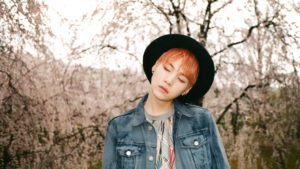 The second explanation relates to the idea of transience, expressed by the recurring image of cherry blossoms. The “Blooming” concept photos in The Most Beautiful Moment in Life Part 1 depict the boys under cherry blossom trees in full bloom, while the first comeback trailer and “I Need U” contain shots of falling cherry blossom petals.
The second explanation relates to the idea of transience, expressed by the recurring image of cherry blossoms. The “Blooming” concept photos in The Most Beautiful Moment in Life Part 1 depict the boys under cherry blossom trees in full bloom, while the first comeback trailer and “I Need U” contain shots of falling cherry blossom petals.
Because they are beautiful but short-lived, cherry blossoms are seen to represent how fleeting life is. “The Most Beautiful Moment in Life” cycle uses them as a symbol of youth, suggesting that youth is similarly beautiful but transient. The knowledge that it will fade away makes youth more cherished in spite of hardships faced.
Just as good things don’t stay forever, so too bad things will not last. This idea is brought out by the motif of the butterfly. The drastic change that a caterpillar undergoes to turn into a butterfly has made the butterfly a powerful symbol of change and rebirth. By placing images of butterflies throughout the concept photos and videos, the visual director is likely drawing parallels between metamorphosis and youth—a period of change for a person—and suggesting that a new beginning awaits.
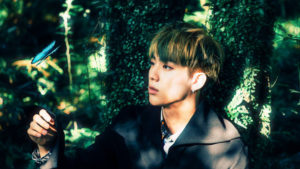
In addition, butterflies often appear in Korean folk art as symbols of happiness and prosperity. Although the “I Need U” and “Run” MVs are dominated by anguish and pain, the latter concludes with some optimism: before the credits roll, V’s struggle ends as he emerges from the water.
The positive note that “The Most Beautiful Moment in Life” cycle ends on is expressed clearly in the hope-filled “EPILOGUE : Young Forever” MV. The MV opens with a crane shot of a huge, elaborate maze, an obvious metaphor for youth with all its trappings. The camera follows Rap Monster as he wanders through the maze; the mist, the austere colour scheme and the blue tones work together to evoke a sense of uncertainty.
When the camera cuts to Jin, however, the mist has cleared up, and the sun begins to shine. Flashbacks to earlier MVs are now captured in polaroids that are in flames, literally removing fragments of the past from the present. The feathers that drift towards Jungkook are a lovely callback to the pillow fights in “Run”, and they seem to hint at the idea of flight. A match-on-action shows Jimin and V running, this time with a clearer purpose than in “Run”: to get out of the maze. Turning for a final look at the twists and turns that he has successfully navigated, V steps out of the maze to join his friends. They take off towards the sunset on an unobstructed runway, and an aeroplane takes flight.
Forever, we are young
Under the flower petals falling down
I run, so lost in this maze
Forever, we are young
Even when I fall and hurt myself
I keep running toward my dream
Perhaps what is most beautiful about youth is this: knowing that it won’t last, and facing adversity, but still having the courage and resilience to overcome challenges. To be able to carry this spirit into the future would mean that one can, indeed, be young forever.
(BigHit Entertainment via YouTube, Images via BigHit Entertainment, Choi Goun: “‘Flowers and Butterflies – In Perfect Harmony’ Exhibition”, Erika Takeda: “Significance of Sakura“, Joslyn C: “Dragonflies, Butterflies & Mythology”, Radio Palava: “On B-Free, BTS, and the kpop-hiphop nexus”, Wikipedia: “Hanami”)
